Refrigeration technology is about as ancient and universal as food itself. Beginning as a massive underground stone building that sustained entire villages to becoming a convenient appliance in almost every modern household, the fridge has truly gone on a transformative journey throughout time. Discover the life giving (and taking) components of the refrigerator in its many forms, whether that’s as a building, box or ball, through the list below.
12. Internet Digital DIOS
Year: 2000
Country: America
Inventor: LG Electronics
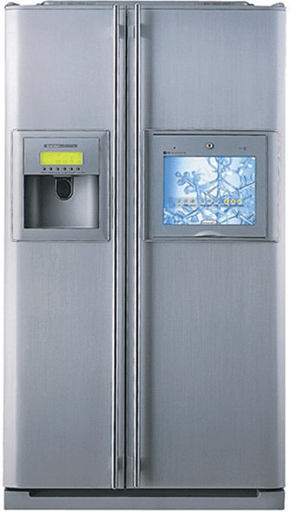
Jumping several decades ahead, LG rang in the 21st century with its debut of the smart fridge. Enabled with a crystal touchscreen, this fridge gave users access to health and food data, not to mention television and email, through wireless internet connection. The fridge also included a stylus for taking notes on a digital memo pad, video messaging, scheduling functions, and a camera for taking inventory of the fridge.
11. Einstein-Szilard Fridge
Year: 1930
Country: Germany (but patented in America)
Inventor: Albert Einstein and Leo Szilard
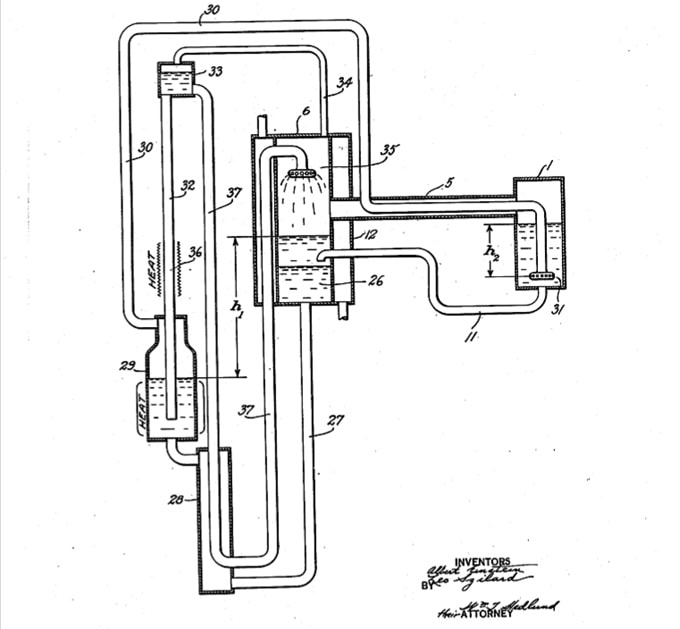
The Einstein-Szilard Fridge has tragic origins. Einstein set out to design a better fridge when he read that toxic chemicals from a fridge killed an entire family when the fridge’s compressor came loose. He contacted Leo Szilard to collaborate on a safer alternative to fridges with chemical refrigerants. The two developed an absorption fridge, which uses heat to spur cooling. In this invention, a methane flame heats (or, really, separates) a refrigerant from an absorbent, using evaporation as a cooling process.
The fridge was quieter than models with chemical refrigerants since it lacked a motor, and safer since it didn’t rely on a flimsy compressor to protect users from noxious fumes. The fridge’s complex components and expensive upkeep, however, prevented it from marketability.
10. Sears Coldspot Refrigerator
Year: 1928
Country: America
Inventor: Herman Price and Raymond Loewy
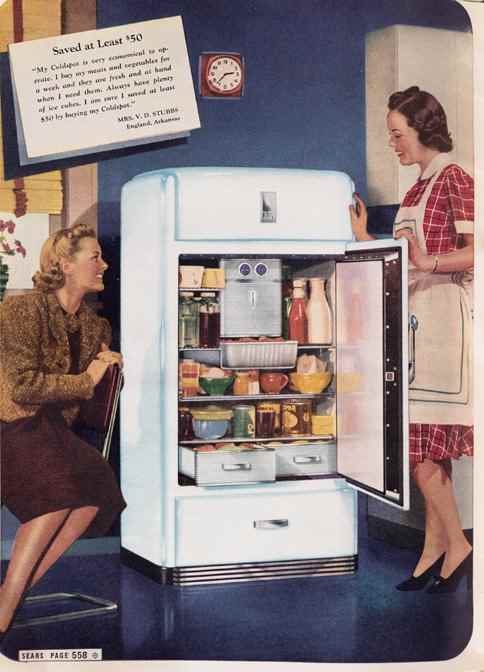
In a time when electric refrigeration was still fairly new, finicky and expensive, the Coldspot was a welcome addition to the home. Although two cubic feet taller than its four foot competitors, the Coldspot and smaller fridges sold for the same price. In 1934, the Coldspot had a redesign that gave it a more modern look, more reliable technology, and aluminum shelves. Coldspot sales increased by 300 percent in a year. Sears would continue to sell Coldspot branded fridges until the 1970s, when they replaced it with the Kenmore brand name.
9. Icy Ball Fridge
Year: 1927 and 1928
Country: Canada and Australia
Inventor: David Forbes Keith and Sir Edward John Lees Halstrom
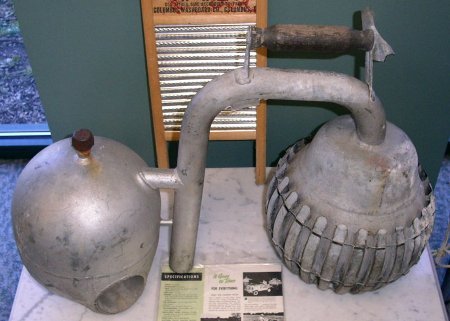
The invention of the icy ball fridge is disputed between Keith and Sir Halstrom, but the designs were more or less the same. An icy ball fridge is an absorption refrigerator. It consists of two metal balls held together by a pipe. The heated ball contains water, the absorber, and the cool ball contains ammonia, the refrigerant. The water absorbs the ammonia gas as it’s boiled, resulting in a cool ball that can store goods. The evaporation-absorption process causes cooling in a way similar to sweat on the human body. The cool ball was then placed in a chest, with the hot ball resting outside, keeping contents cool for about a day.
8. D-Fridge (The Absorption Refrigerator)
Year: 1922
Country: Sweden
Inventor: Baltzar von Platen and Carl Munters
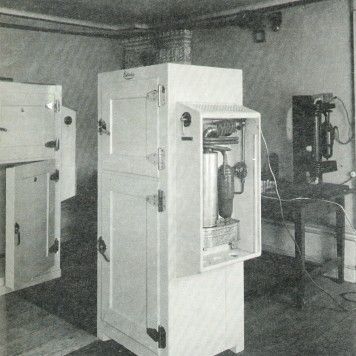
Baltzar von Platen and Carl Munters originally invented the absorption refrigerator as students at the Royal Institute of Technology in Stockholm. Their cooling cabinet invention, similar to William Cullen’s demonstration 200 years prior, used heat absorption to create energy for the cooling process. The Electrolux Company would later apply this concept to their D-Fridge in 1925, using water to cool the cabinet. The company would later innovate a fridge that used air instead, meaning less corrosion and hassle since the appliance did not need to plug into a water pipe.
7. Kelvinator
Year: 1914
Country: America
Inventor: Nathaniel Wales
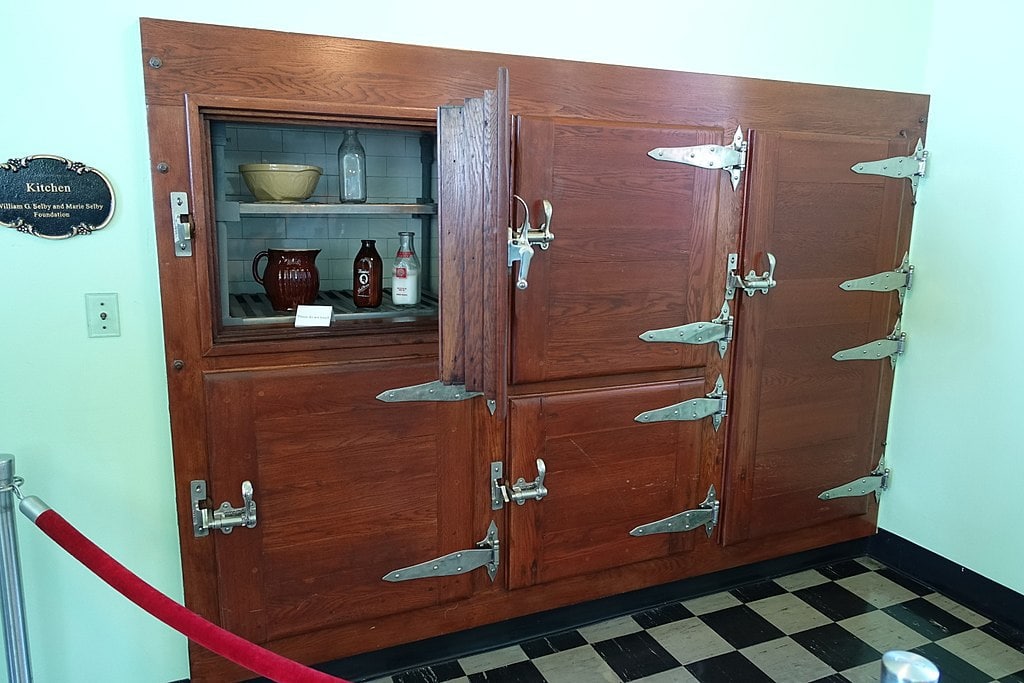
Nathaniel Wales’ Kelvinator was the first electric fridge and, as a result, the first fridge to be mass marketed as a common household object. Wales went on to form the Kelvinator Company (Named for the scientist who discovered absolute zero) and controlled a majority of America’s refrigerator sales in the 1920s. (https://www.top5.com) At first, his fridges were constructed by putting separate automatic cooling devices into ice boxes. After a while, the Kelvinator Company purchased porcelain lined boxes and invented the first self contained fridge.
6. Closed Circuit Fridge
Year: 1805 and 1835
Country: America and London
Inventor: Oliver Evans and Jacob Perkins
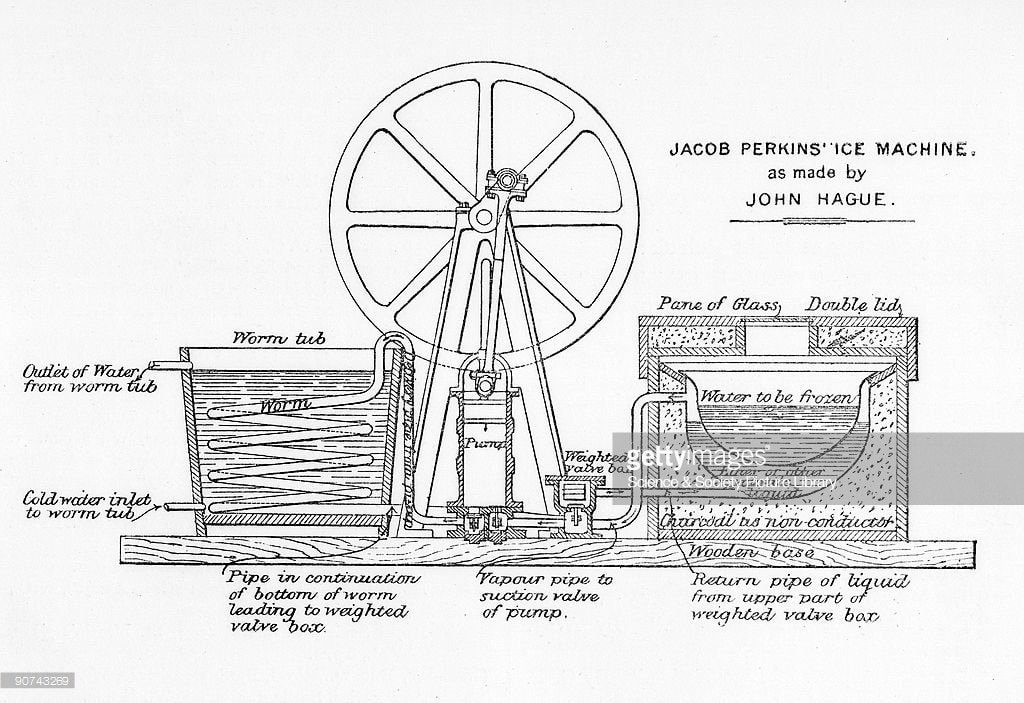
Oliver Evans was an inventor who wore many hats. He delved into railroad and textile innovations before looking into refrigeration. His unpatented design utilized vapors rather than liquid refrigerant to cool foods. Jacob Perkins, an American abroad in London, tweaked Evans’ design and patented it as his own. Perkins used a vapor compression cycle with liquid ammonia to produce ice in his fridge.
5. Ice Box
Year: c. 1802
Country: America
Inventor: Thomas Moore
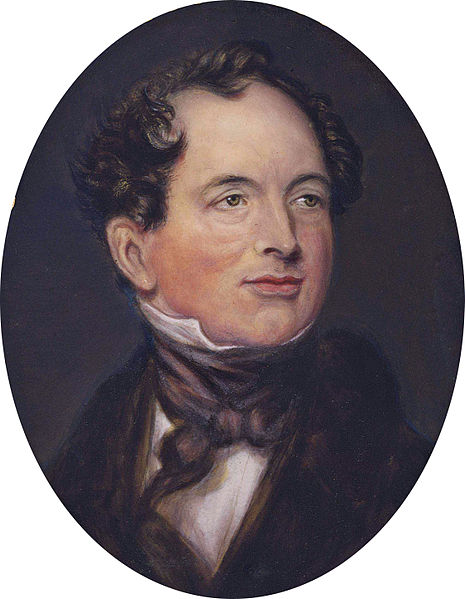
Thomas Moore’s ice box received a patent in 1802 as the first refrigerator, although it was more akin to a cooler. The design was quite simple. Moore placed a small tin box into a wooden box and filled the spaces inbetween with ice. While it didn’t stay cool as long as an ice house, the invention was ideal for keeping perishable goods cool for a few hours or so. He ended up showing his invention to President Thomas Jefferson, who sketched the machine and even purchased one in 1803.
4. Artificial Refrigeration
Year: c. 1745
Country: Scotland
Inventor: William Cullen
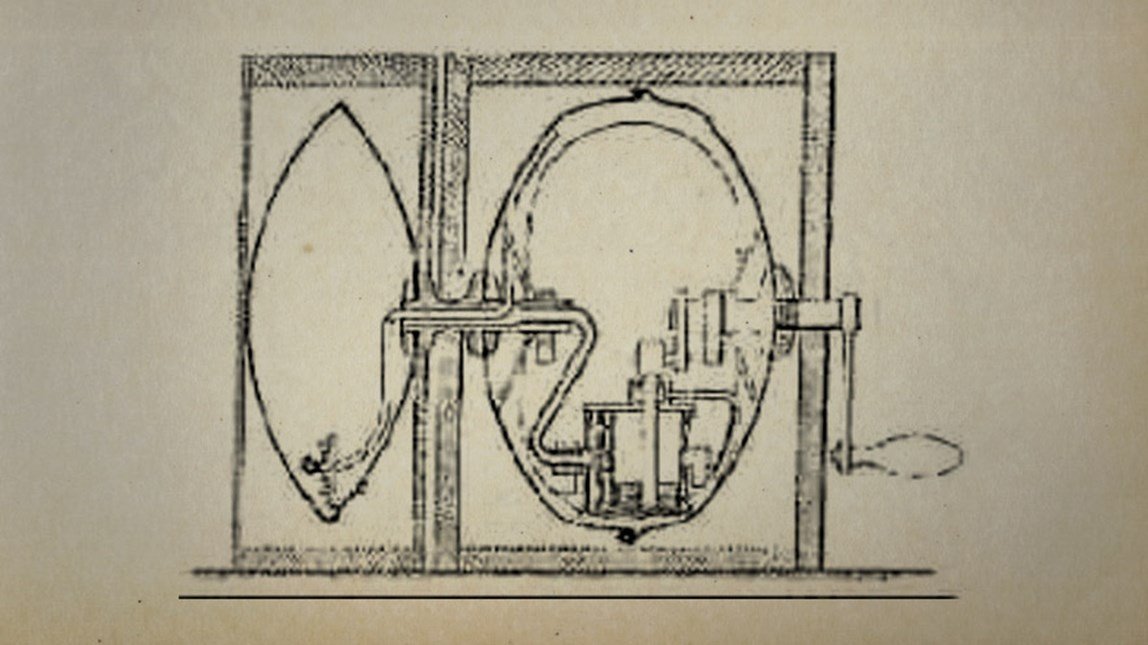
William Cullen is credited as the inventor of modern refrigeration. The Scottish scholar and scientist demonstrated his invention at the University of Edinburgh. Unlike ancient fridges that relied on natural cooling means, Cullen’s fridge used a pump that formed a partial vacuum in diethyl ether. After boiling the diethyl ether, the chemical absorbed the surrounding heat and caused the container to cool enough to produce ice. Although Cullen’s concept couldn’t be mass produced, it is one of the first examples of absorption refrigeration, which makes many appearances on this list.
3. Seokbinggo
Year: c. 520 CE
Country: Korea
Inventor: Unknown
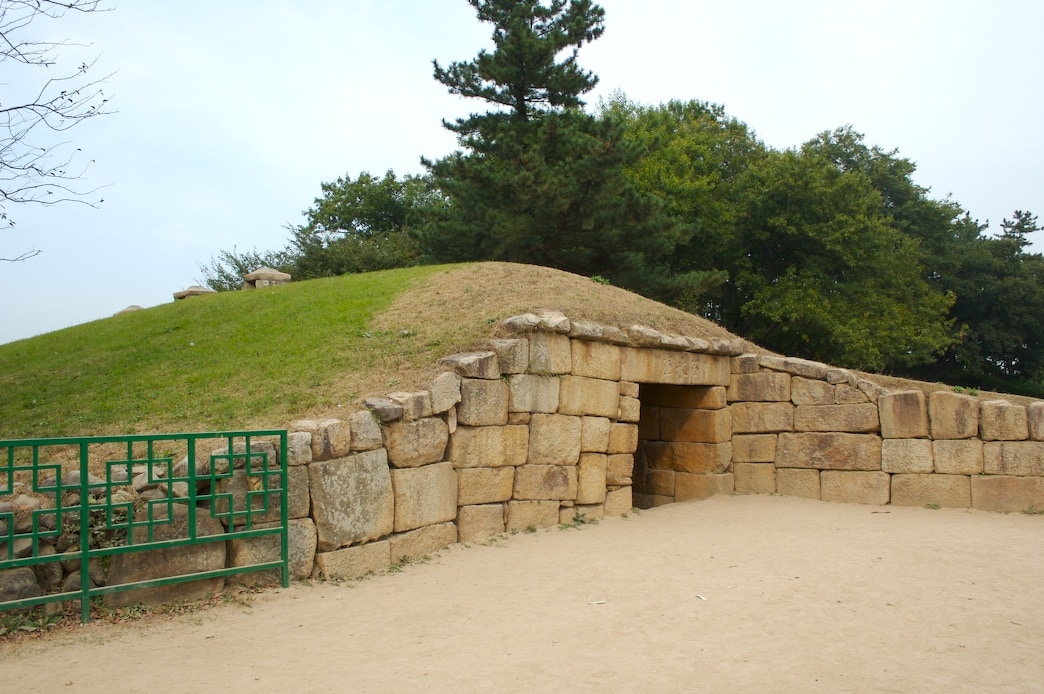
The Seokbinggo (“Freezer made of rocks”) was the Korean version of the ice house. It was a subterranean granite structure with limestone walls that stored ice for the upper classes. When you visit these structures today, you can still feel a temperature drop.
2. Yakhchāl
Year: 400 BCE
Country: Iran
Inventor: Ancient Persian engineers
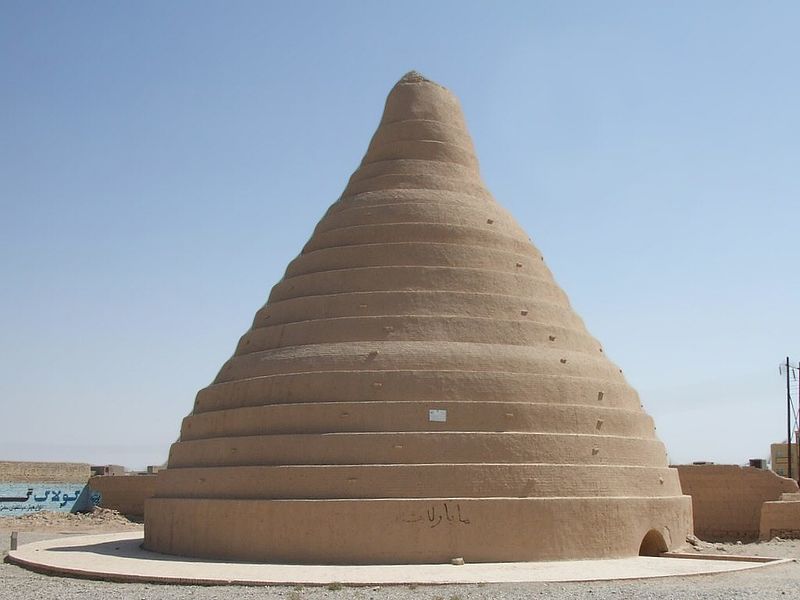
Yakhchāl directly translates to “ice pit” and, like the ice house, served to keep food from perishing, although the design was more intricate. The yakhchāl building was an above ground dome structure and an underground storage unit with an aqueduct system underneath and wind catchers on the outside of the structure. These wind catchers would direct cool air to the aqueduct system through vents and into the underground part of the yakhchāl. The yakhchāl was heat resistant and thick and, also similar to an ice house, filled with snow and ice. It usually served large amounts of people and kept food cool year round.
1. Ice House
Year: 1780 BCE (or potentially earlier)
Country: Mesopotamia, China or Greece
Inventor: Unknown
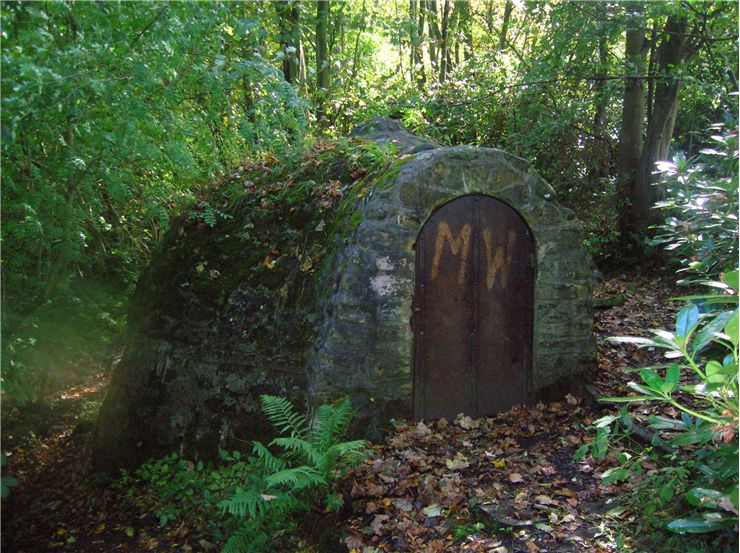
The ice house was an ancient form of refrigeration with origins in Mesopotamia, China, and Greece. The name is fairly literal: it is a cold building meant to hold the village’s foodstuffs through warm weather. Ice houses were usually made from brick or another thick material (like mud or clay) and located fully or partially underground near a water source. In the winter, people would place snow and ice in the building and then insulate it with straw to keep the snow from melting. As a result, the ice house would stay frozen for many months and keep perishable foods safe to eat. The ice house remained in fashion until the modern refrigerator grew in popularity in the mid 20th century.











